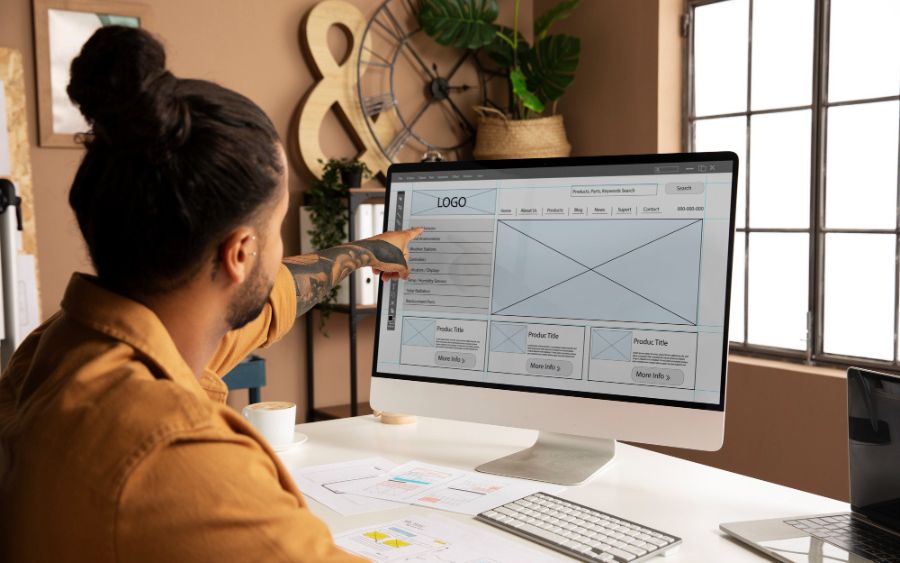This webpage contains affiliate links which may earn commissions for purchases made at no additional cost to you.
For those diving into the WordPress universe for the first time, getting up-to-speed on the array of themes and plugins available can be overwhelming, to say the least. One of the most empowering and user-friendly tools at your disposal is a page builder. Designed to streamline website creation, a page builder can minimize the traditional need for coding skills. It’s not just a time-saver; it’s a path to a customized, professional-looking websites.
What is a WordPress page builder?
WordPress, by default, offers a user-friendly block editor to edit posts and pages called Gutenberg. A page builder, however, takes this a step further by providing an array of tools and interfaces, allowing a modular, visual approach to web page creation. A WordPress page builder is a plugin that allows you to design, edit and build your website layout without needing to write code.
How does it work?
With most featuring a drag-and-drop functionality, WordPress page builders present an intuitive interface. You can begin the creative process with a blank canvas layout or a pre-designed template. Drag and drop text here, an image there, and you have a webpage layout in the works!
The ease of editing is a game-changer. It’s an iterative process where changes are live and visual, so adaptation is instant, and as interactive as the on-screen adjustments you make. No lines of code are required (although there is always the ability to add custom code for additional customizations)…. just pure, visual editing.
Benefits of embracing a page builder
The allure of the WordPress page builder is more than its drag-and-drop simplicity. Here’s a closer look at some of their benefits.
Time efficiency
Time is your most valuable commodity. Page builders excel in shaving hours, maybe even days, off website construction by sidestepping coding complexities. The instant gratification of seeing changes in real-time means you can iterate often, transforming a basic layout into a professional, polished page.
For those with coding skills, page builders are not a tool to be cast aside. Its ability to drastically reduce the time needed to create basic structures means developers can focus on the more intricate, unique, and value-added aspects of a website, rather than reinventing the wheel with every new project.
Design flexibility
Page builders allow for quick shifts in design. Want to swap the position of a call-to-action button and an image gallery? Simply drag them where you please.
Once upon a time, to design a website, you had to either know how to code or hire a web developer to do it for you. Page builders demystify this process, offering an intuitive drag-and-drop interface that transforms the creation of complex web layouts.
Any negatives to using a page builder?
Increased load times
Page builders have garnered criticism for potentially bloating code and creating compatibility concerns that may not jive with all WordPress themes. Code bloat could marginally affect page loading speed, an SEO element as critical in website success as the design itself.
Compatibility
Not all WordPress themes and plugins may be compatible with your selected page builder. While this is increasingly rare, it still pays to ensure your suite of digital tools work together. This demands a regular pattern of reviewing your tech toolkit.
Choosing a WordPress page builder
With so many page builders options, how does one choose? Each builder brings its own set of attributes, integrations, and community support to the table. Our recommended page builder is Divi. It has carved a reputation for itself as a reliable, user-friendly tool that empowers users to create visually stunning websites with much more ease. You can view their pricing here.
We really like Divi’s interface, which is divided into two main areas: the front-end and back-end builders. The back-end is the “behind the scenes” tool where you can manage the structure and layout of your page. The front-end builder is a live-preview interface, so you can see your changes in real-time.
Conclusion
WordPress page builders offer a path to see website dreams come true without the barrier of complex coding language. Have other questions about WordPress? You can read our articles about WordPress child theme and hosting solutions.
We’re here to help you with website design & development. Schedule a free Discovery call here! We’d love to chat with about your vision for your business and how your website can create a clear path forward for your customers!





